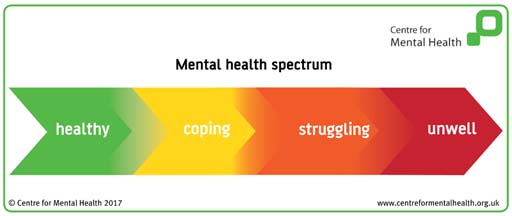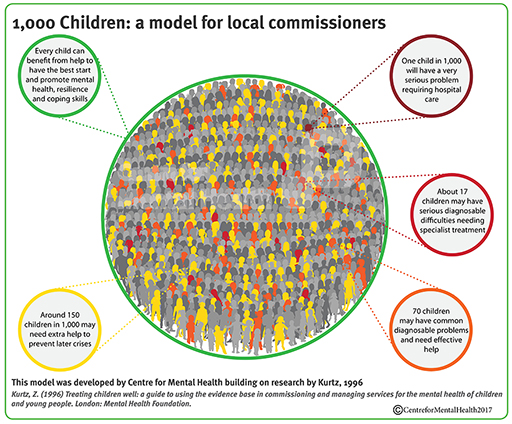4 Making referrals
If you have been working with children for some time, or if you are familiar with mental health services for adults, you may have heard the word CAHMS used in relation to service provision. In most areas of the UK, Child and adolescent mental health services (CAMHS) are commissioned to work with children and young people up to the age of 18 who are experiencing emotional or mental health problems. It is not possible for a young person or their parents to self-refer, and there are a number of reasons for this. One of the main being that professionals working in primary care and schools, such as GPs, school doctors and nurses, educational psychologists, special educational needs coordinators and social workers are often best placed to provide initial help. They tend to be based in the young person’s community and can draw on their professional networks to organise support around the needs of the young person and their family. CAMHS take over when the practitioners with more generalist skills identify the need for specialist care, e.g. prescribing medication, advanced therapy skills and specialist skills aligned to particular mental health issues. These practitioners based in local communities are essentially the ‘gatekeepers’ for the more specialist CAMHS.
CAMHS is typically represented by a tier structure. Tier 1 represents ‘universal’ services with a remit to promote good mental health. Tier 2 represents more targeted services that can support young people with the less severe problems. Tier 3 is the beginning of the specialist services that deal with more severe needs, usually on an outpatient arrangement. Tier 4 is highly specialist and often involves a hospital stay (ACAMH, 2020). Click through the tabs to read an explanation of each of the tiers.
Revisiting the ‘mental health spectrum’ introduced in Session 2 and considered again in Session 6, a young person would need to be ‘struggling’ and moving into the ‘unwell’ zone for a referral to specialist services.
To put things into perspective, look at this infographic developed by the Centre for Mental Health (2017). Based on 1996 research, the figures will not be quite up to date. They do, however, provide a sense of proportion, based on a population of 1000 children and young people, about the levels of support likely to be needed at any one time.
As this infographic highlights, at any one time, out of 1000 children and young people:
- about 150 have a high risk of poor mental health and may need extra help to prevent later problems;
- a further 70 will have a common diagnosable problem for which they need effective help;
- 17 will have a serious problem needing specialist treatment;
- one will have a very serious condition that requires hospital care.
It also illustrates the complexity of mental health and the importance of exploring the referral process in order to receive the most appropriate support and treatment. You will explore this next.


